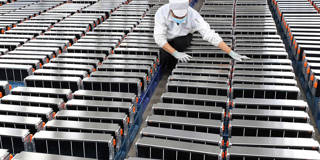In China, top-down control coexists with – and even allows for – local-level autonomy and bottom-up innovation. It is this “double-helix” phenomenon that confuses some observers, leading to radically contrasting analyses of the economy’s prospects.
SHANGHAI – Rarely do assessments of an economy’s performance and potential diverge as sharply as they do when it comes to China. Even as some economists laud China’s past achievements and future prospects, others fixate on presumed flaws in its development model and suggest that the middle-income trap awaits. But even more remarkable than the sharp divergence of opinions on China’s economy is the fact that both sides are able to marshal ample evidence to support their views.

SHANGHAI – Rarely do assessments of an economy’s performance and potential diverge as sharply as they do when it comes to China. Even as some economists laud China’s past achievements and future prospects, others fixate on presumed flaws in its development model and suggest that the middle-income trap awaits. But even more remarkable than the sharp divergence of opinions on China’s economy is the fact that both sides are able to marshal ample evidence to support their views.